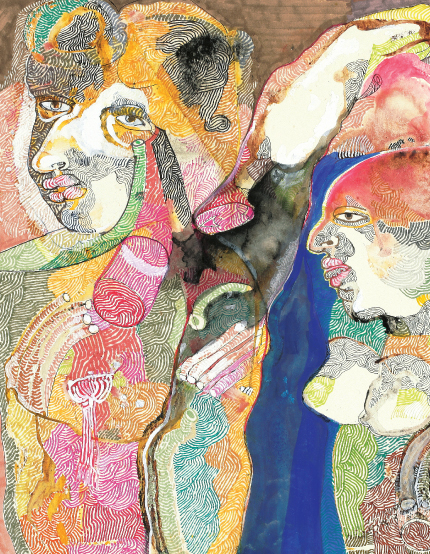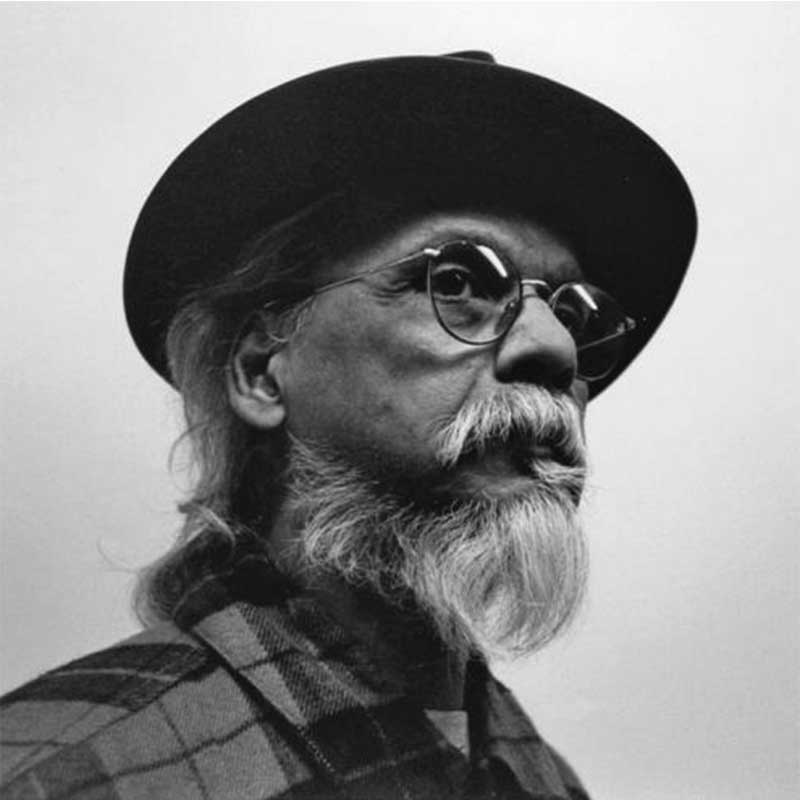
In collaboration with the Estate of Mohan Samant
Mohan Samant was a prolific artist, who experimented with style, technique, colour and material - he was never afraid to try. When many of his compatriots had stagnated in work that grew out of postcolonial ideologies, Samant had already moved on, experimenting with avant garde possibilities in the 50’s and 60’s that Indian art did not fully explore till the 80’s. Cultural theorist Ranjit Hoskote describes him as “the missing link in the evolutionary narrative of contemporary art in India”
This was the first major exhibition after Samant’s death in 2004. It attempted to reveal the complexity and density of this genius' oeuvre. A single work could employ many complicated techniques and the show included a whole range of his work including mixed media, watercolours, oils and elaborate paper cutouts.
Samant’s art reflected the full gamut of historical, spiritual and quotidian experience, so that one day’s theme might illustrate a scene from Hindu scripture and the next day’s subject might be a seaside festival. In his technical experimentation and the range of his subject matter, Samant forged his own path through traditional and modern Indian painting as well as the New York art world. With one foot in the distant past and the other in the contemporary, Samant epitomized the role of the individualist who finds inspiration strewn across the ages and then speaks in a voice that reflects his own time.

Mohan Samant (1924-2004) was born in Bombay and was an early Indian modernist painter and member of the Progressive Artists’ Group. In 1952, he received his diploma from the J.J. School of Art, where he studied under Shankar Balwant Palsikar. He was then awarded the Governor’s Prize and the silver medal for watercolours at the Bombay Art Society Annual Exhibition in 1954.
Samant joined the PAG in 1952, and took part in several of their group exhibitions, including the 1953 show, ‘Progressive Artists’ Group: Gaitonde, Raiba, Ara, Hazarnis, Khanna, Husain, Samant, Gade’ at the Jehangir Art Gallery. After the PAG disbanded in 1954, he became a participant in the Bombay Group, one of its successors.
In 1956, Samant received three awards: a gold medal at the Bombay Art Society’s group exhibition, another at the Calcutta Art Society show, and the Lalit Kala Akademi-All India Award. Samant spent 1957 to 1958 in Rome on a scholarship awarded by the Italian government. In February 1959, he received a Rockefeller Fellowship in New York City, where he lived until 1964.
Samant returned to Bombay from 1965 to 1968. During that time his work was still shown in New York, where he was represented by World House Galleries. In 1968, Samant left India permanently. He went back to New York, where he continued to work and to exhibit internationally.
Throughout his career, Samant took part in exhibitions both in India and internationally. His work is in a number of public collections, including the Museum of Modern Art, New York; the Hirshhorn Museum, Washington D. C.; the Smithsonian American Art Museum, Washington D. C.; and the National Gallery of Modern Art, New Delhi. In 2000, Samant received the Asian American Heritage Award for lifetime achievement in the arts. In January 2004, not long after a retrospective in India, he died in New York.